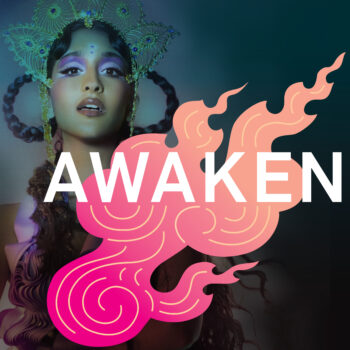
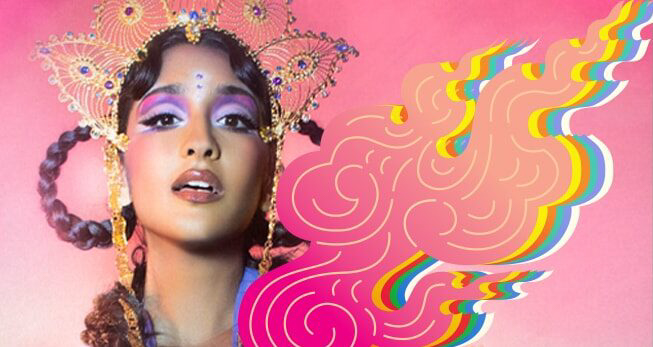
What is a mandala? Like many Tibetan Buddhist artworks, a mandala is a visual catalyst that can lead to awakening. In our first episode, we introduce the mandala, come to understand what it represents, and experience how it may be used as a guide for exploring ourselves, each other, and the world.
RUTH OZEKI:
When I hear the word mandala”¦
MADAME GANDHI:
I see precision. I see delicacy. I see history.
RUTH OZEKI:
The first thing that comes up is a visual image of the Tibetan tangkas,
Madame Gandhi
I see peace. I see art. I see a reflection of sort of like the perfection of nature”¦
RUTH OZEKI:
These beautiful, richly painted maps of the mind, maps of the cosmos, maps of the spiritual journey.
TRACY DENNIS-TIWARY:
If you look at the veins of a leaf super close, or the DNA of a snowflake super close, this kind of thing of where all the sacred geometry exists around us.
RUTH OZEKI:
The mandala is so intricate, and it contains so much. It contains an entire cosmos, an entire universe, an entire mind. That’s what makes it, I think, such a compelling image to look at.
RAVEENA AURORA:
Welcome to Season 2 of AWAKEN, a podcast from the Rubin Museum of Art that uses art to explore the dynamic path to enlightenment and what it means to “wake up.” I’m singer and songwriter Raveena Aurora and I have been learning about the transformative power of art throughout my life.
Since time immemorial, art has been used as a portal to better understand ourselves and the world around us. At the Rubin, a museum dedicated to art from the Himalayas, we believe art can inspire us on a path to awakening. And in this series, we’re using a specific artwork, the mandala, to explore this journey and the emotions that accompany us on the way. With the help of many artists, the Rubin Museum created an interactive space for visitors to explore these emotions. It’s called the Mandala Lab.
But what is a mandala? A mandala is a guide. People from many cultures and religious traditions around the world use mandalas as maps to navigate their inner lives, including their emotions. Throughout this series, with the guidance of scientists, Buddhist teachers, writers, artists, and activists, we wrestle with five challenging emotions “”anger, pride, attachment, envy, and ignorance””to help us take a new perspective on how emotions can influence our day-to-day experience”¦and what they might be able to teach us if we get curious.
In this episode: Entering the mandala.
DZOGCHEN PONLOP RINPOCHE:
Mandala is a Sanskrit word.
RAVEENA AURORA:
Dzogchen Ponlop Rinpoche is a leading Buddhist teacher and one of the foremost scholars and meditation masters in the Nyingma and Kagyu schools of Tibetan Buddhism.
DZOGCHEN PONLOP RINPOCHE:
Manda actually comes from another Sanskrit root, which means the center. That center actually is referring to like the core or the essence. And so the core or the essence here refers to the essence that is of wisdom. Wisdom that is at the core of our consciousness. That core, the essence is the wisdom, and that wisdom is the wisdom of awakening. And then the second syllable””la””means extracting or revealing or taking it out. So together it is revealing or extracting the essence.
RAVEENA AURORA:
In this inaugural episode, we introduce the mandala, better understand what it represents and how it may be used as a guide for exploring ourselves, each other and the world.
Like many Tibetan Buddhist art works, the mandala is a visual catalyst that can lead to awakening. Writer, photographer, translator, and Buddhist monk, Matthieu Ricard.
MATTHIEU RICARD:
Mandala is really something that is used precisely to develop pure vision, to see all sentient beings as enlightened deities, the whole world as what you call a pure land, which is not a distant paradise to which you could go with a rocket or something.
RAVEENA AURORA:
Another way of picturing a mandala is to imagine you are taking a bird’s eye view of a celestial palace, a kind of circular floor plan, with the most important room in the very center. Around the center circle there are four quadrants, each with a gate that faces a cardinal direction “”north, south, east, and west. In a specific meditation, a Tibetan Buddhist might imagine themselves navigating through layers of rooms, moving from the outside in, towards the center, towards awakening.
DZOGCHEN PONLOP RINPOCHE:
And so it is the circle of all aspects of our consciousness or emotions. Another meaning is actually the center or the core refers to the wisdom or the self-awareness. So there are like the four quadrants here that you can see, and then the center together makes it five, there are five primary basis what we call kleshas, or emotions, that are connected to that.
RAVEENA AURORA:
But what do these emotions feel like? Listen to the tones, not just the words, and these might offer a sense.
Anger
NORA:
That’s it! You’re not getting your ball for a week!
RAVEENA AURORA:
Pride
RUTH OZEKI:
You do need to respect me. I made these choices for you, I made these choices for our family.
RAVEENA AURORA:
Attachment
RUTH OZEKI:
What was really so painful was watching his passionate attachment to his life just at the point where he was leaving it.
RAVEENA AURORA:
Envy
SHARON SALZBERG:
Eww, I would be happier if you had a little bit less going for you.
RAVEENA AURORA:
And ignorance
RUTH OZEKI:
Oh, I know who these people are, and I don’t like them.
RAVEENA AURORA:
Now when we become more curious about these emotions, we can see their true nature, see them for the wisdom they might bring us.
MATTHIEU RICARD:
So their true nature are the five wisdoms. It’s just a way to help us rediscover that, is the true nature of things.
RAVEENA AURORA:
And that’s what this series is all about. Turning emotions into wisdom. It’s about looking at what we often find to be difficult emotions and transforming them into their counterpoint, their wisdom.
Ruth Ozeki is a Zen priest, professor and author, most recently of, The Book of Form and Emptiness.
RUTH OZEKI:
A mandala”“well, it’s a map of a journey, and a journey is something that takes place over time. It takes place over time, and it moves through space. You start a journey in one place and at one moment in time, and you travel through space, over time, to arrive at another place in time.
And what a mandala does is, it sort of compresses space and time into a single image and a single moment.
DZOGCHEN PONLOP RINPOCHE:
That’s right. And mandala is also representation of our own true existence, or representation of who we truly are, as an awakened, completely free mind. And so mandala represents both the result as well as the path that leads us to that result. At the same time, mandala is also a representation that shows us who we have always been, from the fundamental point of view. So therefore you can see, mandala is the ground, and mandala is the path, and mandala is also the fruition.
RUTH OZEKI:
And that’s pretty cool, when you think about it. The idea that space and time can be compressed into a single image that can be looked at and apprehended in a moment. But then, of course, it’s not just that. Even though you can glance up, and look at a mandala, and see it in a flash, it really only starts to reveal itself over time again. So in order to really see a mandala, you need to spend time with it and let the mandala unfold and open. And that’s always interesting to me, too, because as a maker””I write novels, and novels are a time-based medium.
MATTHIEU RICARD:
You don’t become a good car repairman without having a lot of experience. So you know, hard work is necessary, and it’s good, because you become enthusiastic, because you see what’s at the end of your efforts. You see the fruit in perspective. But the quick fix; no, I’m sorry, but I’m afraid it doesn’t work.
RUTH OZEKI:
A mandala makes a long time to make. The time that the maker spends, that the painter spends painting, all of that time is compressed into that single image. And then, it’s received by the person who’s observing it, who’s meditating with it, who’s spending time with that image. And then, the image sort of unfolds through time, over time, to the observer as well.
RAVEENA AURORA:
The purpose of looking at the five emotions illustrated in the mandala, is to really see the ways we can learn from our most difficult emotions and the role our sense of self plays.
DZOGCHEN PONLOP RINPOCHE:
The sense of ego, sense of ego clinging or self-centricity, according to Buddhist teaching, is the root of all of the emotions, root of all of the confusions, root of all of the sufferings. And so therefore ego-centered mind always intercepts our experience. Whether it is positive or negative experience, our ego always intercepts, and ego always kind of hijacks our experience, our raw experience, you know? [laughs]
We may be having a wonderful experience, awakening kind of experience, or we may be having a really terrible experience, of anger for example. Or wanting to harm oneself or others. But that experience usually is hijacked by ego. So when the experience is hijacked by ego, then that means that we have no chance, or no time to work with that experience, but we’re working with something else. So original experience of your anger with someone may be pretty simple, actually, but then when it’s hijacked by ego, it becomes a totally different ballgame. Now, you’re dealing with hijacker plus the issue with your anger, and so now you have to rescue yourself from this hijacker.
And so it gets more and more complicated, because this hijacker has its own agendas, its own troops, its own power, and its own game that it brings in here. So then you can see how a very simple and beautiful experience can get so convoluted and so far away from its original experience.
RAVEENA AURORA:
When that sense of self is removed, we can see the experience outside of the categories of good or bad. We can see it just for what it is. Matthieu Ricard.
MATTHIEU RICARD:
So what is pure perception? Normally when we see something, perceive something, think of something, whether it’s people, things, we discriminate between pleasant, unpleasant, beautiful, ugly, harmonious, discordant, friend, enemy. So we have a very biased perception of reality. We superimpose things to reality.
We distort reality, and that distortion is the root of ignorance that eventually leads to suffering. So, one of the goal is to bridge the gap between appearances and reality.
RAVEENA AURORA:
Seeing things as they are is difficult work. We all experience a wide range of emotions and it can be hard to know what to do with them when they come up. Neuroscientist Tracy Dennis-Tiwary-Tiwary can offer some insight into how to shift the emotion into something that can be more helpful to us. In the mandala, this would be where we begin to learn wisdom from our emotions. It isn’t age that gives us wisdom, it’s awareness.
TRACY DENNIS-TIWARY:
So, you’re sitting with an emotion. The very first step is you’re calling it by its name. So you just have to make the conscious effort of, okay, I’m going to be with this ugly feeling right now that …and I may not even know what it is yet. So, that’s the first thing, that tuning in.
Then, when you’re tuning in, I think of it like a radio. When you’re tuning into an emotion, it’s like you have a scratchy signal on your radio. You’re trying to find a channel, but it’s like you’re going [makes static sounds] and you haven’t found the signal yet. So, you just keep on turning the knob. So, that’s the investigatory piece, right? So, you’ve been with it. You’ve tuned into it. You’ve investigated it, and then, it’s only then when you have these kinds of practices that you can start to figure out, okay, is this useful information that the emotion is giving me?
So, that’s the time where we shift out of all this investigation into what I would argue is really immersing ourself in the present. Those of us who have spiritual practices, mindfulness practices, maybe who really love exercise, who love music, who do these things in our life that help us really anchor ourselves in the present moment, maybe we love to take all walks in the forest where we just admire the beauty of the world around us, whatever it is. There’s so many ways to immerse ourself in the present.
Then, I’d like to think of a third and final step with using emotions, which is especially for me because I think a lot about anxiety and how it can help us with mental health, when we take our difficult emotions. Maybe it is anger. Whatever it is, and we hitch it to what gives us a sense of purpose and meaning in life, then that’s when we can start to use emotions and really leverage them for good in our life.
So, for example,maybe I’m really anxious about climate change and where we’re going in this world. Well, I could just sit around and be anxious about that, or I can decide, okay, well, I’m going to be anxious about it. I’m going to try to cope with it, but the best thing I can do is to become an advocate and to become an activist in this area that is”¦I really care about it because it’s causing me so much anxiety. I care. I have the energy to do something because anxiety gives me that persistence and focus and drive, so I’m going to shift it towards that.
RAVEENA AURORA:
While we’re learning wisdom from these difficult emotions of pride, attachment, anger, envy, and ignorance, there are mandala-like guides that can be found in our everyday lives. Other types of art can be portals for enlightenment and awakening.
RUTH OZEKI:
I used to think that my writing practice and my spiritual practice were two different things.
RAVEENA AURORA:
Again, Ruth Ozeki.
RUTH OZEKI:
And I was a little perplexed by that, and I think I felt a little guilty about writing because it seemed like, especially novel-writing because you’re just wallowing around in the realm of story. Aren’t we supposed to be letting go of our stories? Why am I clinging to stories and, in fact, creating new ones? I’m just perpetuating samsara here and reveling in samsara. Surely, this must be a terrible problem. And recently, I don’t feel that anymore at all. I feel more that writing is what I do, and it’s my way of expressing my spiritual practice.
It is my expression of the spiritual practice that I do. And so, it’s no longer a problem. I no longer feel there’s a separation there. And I think that art has always been that. I think art has always been an expression of our spiritual practice, our spiritual yearning, our spiritual insight. It’s very inspiring. And certainly, a mandala is a perfect example of that. But I think it applies to other media as well.
I think everyone has their own way of expressing their spiritual practice, and it doesn’t have to be through writing novels, or writing haiku, or painting mandala, or painting sumi-e brush paintings, or making music. But there are so many ways of expressing our creativity because I think our creativity is very much part of who we are as spiritual beings. You can wash the dishes in a way that is beautiful. You can take a walk with your child in a way that is creative, and beautiful, and so that’s a creative expression of your”¦you can call it your dharma position, your spiritual enlightenment in that moment.
We have a very, I think, sort of narrow conception of what art is. It’s painting, it’s music, it’s poetry, it’s writing. But I think art can be anything that’s beautiful.
I think that’s the other thing about mandala that I really love, is the idea that the mandala really represents the interconnectedness of all things, right? Because it’s held within this circle. And all of the images sort of are operating in relation to all of the other elements and images. And that is just a very beautiful and very powerful symbolic language as well. So I really love that.
SHARON SALZBERG:
Just the vast array of ways in which we are all connected is also reflecting on the nature of mandala.
RAVEENA AURORA:
When we come to realize how everything is connected, our minds open, our heart opens, we feel supported and we can help others in feeling the same. Author and Buddhist teacher, Sharon Salzberg.
SHARON SALZBERG:
Someone’s mandala might include their circle of people, right? Their circle of friends. And something I’ve said repeatedly, more so with memorial services than with almost any ceremony, but at times with weddings or other things as well, when I have been at gatherings with people that have centered on an occasion in someone’s life, or perhaps their death, it’s always amazed me how big people’s circle sometimes is.
Like, “I didn’t know you knew people from bowling.” Or, “I didn’t know you also knit, and you were part of this knitting club.” And, “I didn’t know you had a book club.” It’s often how I sit there in these places. Like, “Oh, your life was so much bigger. And I was just, like, a little corner of it. And you had all these other arenas in which you met people, and you cared about them, and they cared about you. Look at that. That’s such a surprise to me.” And it’s, like, the sum total of all those many people, and influences and relationships, that would be somebody’s mandala. That would be somebody’s kind of representation of their life. If you were going to put everyone’s little photo, like a Zoom screen, on a painting or something like that.
MATTHIEU RICARD:
I think it can lead us to a sense of, how do you say, deeper appreciation of interdependence, or deeper kind of look, gaining a tool to look deeper into the interconnected nature of the world, through which of course you can’t help but to have genuine sense of love and compassion towards each other.
RUTH OZEKI:
I think the mandala really, again, is a kind of distillation of that notion of interbeing, interconnectivity. I think it’s also a representation, in a way, of community, too. it’s the community that is within that circle. And so, there’s this sense of a kind of representation, of connection, of kinship, of sangha, of the cosmos, on whatever scale that might be. There’s a completeness to it. There’s a kind of contained unity there. And in a way, it’s, of course, idealized, too. In that sense, it’s quite inspirational. It inspires us to look at a mandala.
SHARON SALZBERG:
Another function of the mandala, whether you use it literally as a mandala or not is remembering that we’re not alone. Because we can feel so alone as we face adversity of some kind. But in truth, we’re not alone. We’re never alone. And so, however you genuinely remind yourself of that is a tool worth having.
RAVEENA AURORA:
We all need tools to help us navigate the complex and dynamic world of our emotions. But maybe the most important tool of all is curiosity, something we all have. Over the next episodes, as we listen to reflections on anger, pride, envy, attachment and ignorance, as we tune in to these mind states, we can bring with us our innate curiosity and wake up to what’s possible. As Sharon says”¦
SHARON SALZBERG:
Everybody wants to be happy.
RAVEENA AURORA:
And when you explore with courage”¦
NORA:
You’ll feel really proud because you did it by yourself.
RAVEENA AURORA:
And you come to find that the feelings you might be scared of have so much to teach you”¦
RUTH OZEKI:
You’re holding the feeling, and turning it, and examining it, and transforming it
RAVEENA AURORA:
And rather than be critical of our emotions, like anger, we can”¦
MARK EPSTEIN:
Learn to hold anger like a baby. You hold it lightly. You hold it lightly.
RAVEENA AURORA:
Ultimately”¦
RUTH OZEKI:
I think these conversations about difficult emotions are the single most important kind of conversation we can have right now to improve our lives.
RAVEENA AURORA:
Thank you for listening to Season 2 of AWAKEN.
You just heard Buddhist teacher and scholar Dzogchen Ponlop Rinpoche, psychologist and neuroscientist Tracy Dennis-Tiwary, Buddhist teacher and author Sharon Salzberg, author, photographer, and Buddhist monk Mathieu Ricard, Zen priest and author Ruth Ozeki, ten-year-old Nora Wood, and activist and author adrienne maree brown.
AWAKEN is produced by the Rubin Museum of Art with Dawn Eshelman, Tenzin Gelek, Jamie Lawyer, and Christina Watson. The series is produced in collaboration with SOUND MADE PUBLIC including Tania Ketenjian, Emma Vecchione, Philip Wood and Jeremiah Moore.
Music produced by Alexis Cuadrado and Hannis Brown. With some additional tracks from Blue Dot Sessions.
AWAKEN Season 2 is part of the Rubin Museum’s Mandala Lab, a multiyear initiative generously supported by 28 donors and sponsors. Lead support is provided by the Milton and Sally Avery Arts Foundation, Barbara Bowman, The Pierre and Tana Matisse Foundation, Rasika and Girish Reddy, Shelley and Donald Rubin, and the Tiger Baron Foundation.
Public funding is provided by the New York City Department of Cultural Affairs in partnership with the City Council, and the New York State Council on the Arts with the support of the Office of the Governor and the New York State Legislature.
You can continue the conversation by following us on Instagram at @rubinmuseum. And if you’re enjoying this podcast, leave us a review wherever you listen to podcasts, and tell your friends about the conversation you just heard.
This is episode 1 of a 7-part series inspired by the Mandala Lab at the Rubin Museum””an immersive space for social, emotional, and ethical learning. Come explore the Lab in New York City, or in one of the installations that is traveling the world. To see the Vairochana Mandala which inspired the Mandala Lab and this season of AWAKEN, visit rubinmuseum.org/awaken. We look forward to seeing you soon. Thanks for listening.
AWAKEN Season 2 is hosted by singer and songwriter Raveena Aurora. Guests featured in this episode include psychologist and neuroscientist Tracy Dennis-Tiwary, Buddhist teacher and psychotherapist Mark Epstein, artist and activist Madame Gandhi, Zen priest and author Ruth Ozeki, author and Buddhist monk Matthieu Ricard, Buddhist teacher and scholar Dzogchen Ponlop Rinpoche, Buddhist teacher and author Sharon Salzberg, and student Nora Wood. Read more about these guests below.
View the Vairochana Mandala which inspired this season of AWAKEN and the Rubin’s Mandala Lab below.
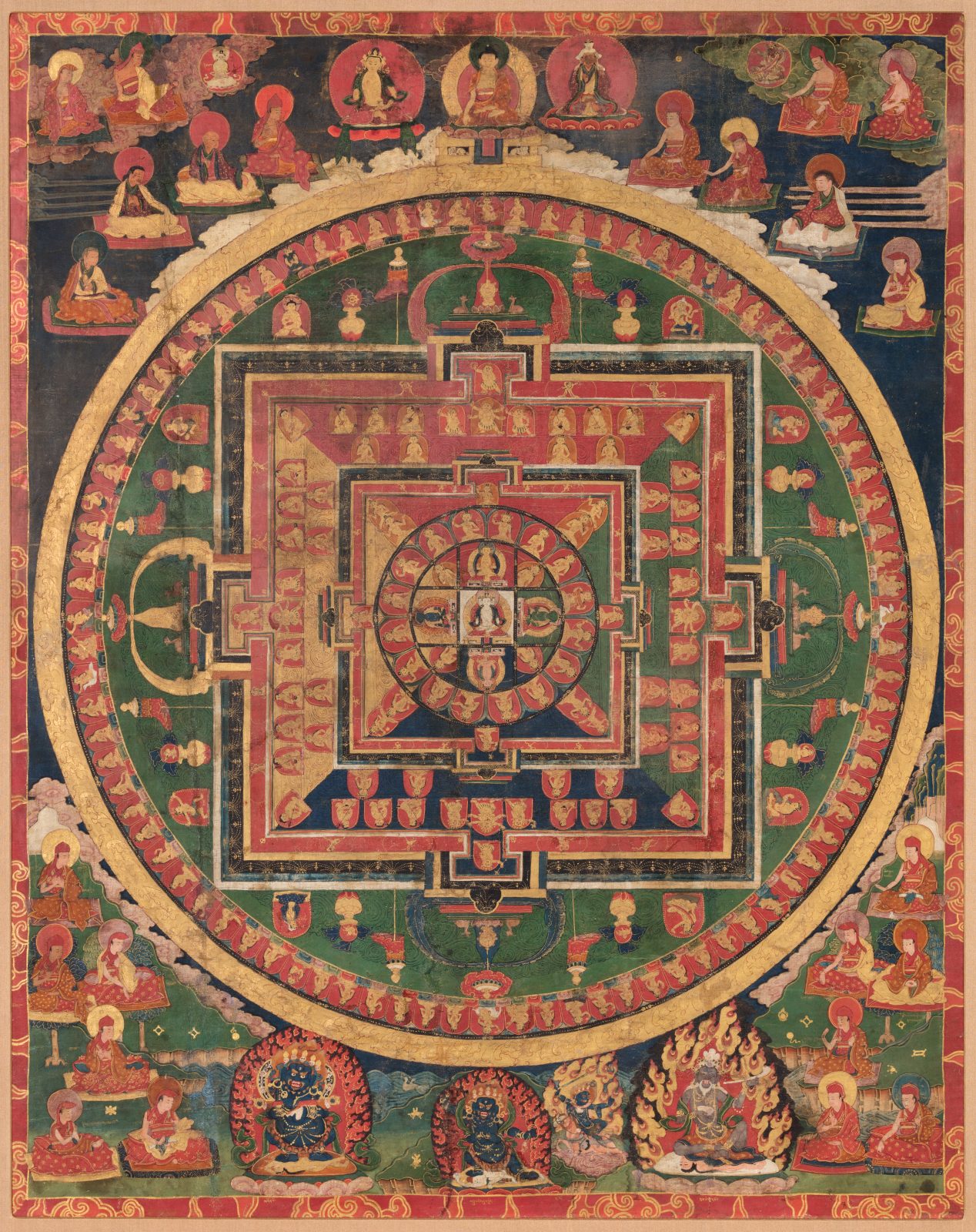
Sarvavid Vairochana Mandala; Tibet; 17th century; Pigments on cloth; Rubin Museum of Himalayan Art, Gift of Shelley and Donald Rubin; C2006.66.346
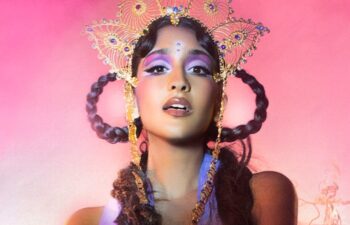
For Raveena, music is meant to be a “complete expression of the self.” It’s a truth she’s leaned on through a whirlwind couple of years, which saw a potent flurry of output and a pointed ascent into the conversation with her critically acclaimed 2019 debut full-length, Lucid, and 2020 follow-up, Moonstone EP. Asha’s Awakening takes listeners on an epic deep dive into Indian culture. An homage to her heritage as a first-generation descendant of genocide survivors and Reiki healers, the album incorporates influences from Bollywood and celebrated Indian artists like R.D. Burman and Asha Bhosle, as well as Western music—specifically R&B, rock, and soul—and melds the genres prevalent throughout Raveena’s catalog into one cohesive body of work. The album also marries eras in time, fusing together a contemporary take on sounds influenced by Alice Coltrane and Asha Puthli from the 60s and 70s with those of Timbaland, Missy Elliott, M.I.A., and Jai Paul from the early 2000s. It is a labor of love that represents her evolution as an artist. Raveena remarks, “I think it’s really fun putting people in uncomfortable positions to receive new sides of you. The human experience is so vast.”
Inspired by artists like Sade, Corinne Bailey Rae, Minnie Riperton, and Indian singer Asha Puthli, Raveena is a highly creative, dynamic, and spiritual artist who aims to build fully realized worlds within each of her projects: conceptual experimentations in sound, threaded together by stories of healing and self-realization meant to be experienced from start to finish.

Tracy A. Dennis-Tiwary, PhD, is a professor of psychology and neuroscience at The City University of New York. As director of the Emotion Regulation Lab, she conducts NIH-funded research on anxiety, suicide, and digital therapeutics for stress and anxiety. She is the cofounder of Arcade Therapeutics, which translates cutting-edge science into digital tools for behavioral health, and co-executive director of the Center for Health Technology at Hunter College. She is the author of Future Tense: Making Anxiety Our Superpower.
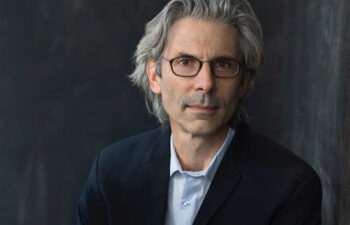
A highly-regarded psychiatrist in private practice in New York City, Mark Epstein, MD, is the author of a number of books about the interface of Buddhism and psychotherapy, including Thoughts without a Thinker, Going to Pieces without Falling Apart, Going on Being, Open to Desire and Psychotherapy without the Self. The Trauma of Everyday Life uses the Buddha’s biography as a means of exploring the hidden psychodynamics, and contemporary relevance, of Buddhist thought. He received his undergraduate and medical degrees from Harvard University and is currently a clinical assistant professor in the postdoctoral program in psychotherapy and psychoanalysis at New York University.

Madame Gandhi is an award-winning artist and activist known for her uplifting, percussive electronic music and positive message about gender liberation and personal power. She began producing music in 2015, after her story running the London Marathon free-bleeding to combat menstrual stigma went viral around the world. She has been listed as Forbes 30 Under 30 in Music, and her 2020 TED Talk about conscious music consumption has been viewed over a million times. Waiting For Me, shot in Mumbai, India, won the Music Video Jury Award at SXSW Film Festival in 2021, and her 100% Organically Sourced x Sound MANA nature sound pack won the New.Wav award at the 2021 Splice Awards. Her third studio album, Vibrations, is slated for release in 2022, following the release of her previous albums Voices (2016) and Visions (2019). Gandhi completed a Masters in Music Science & Technology at Stanford University’s CCRMA where she spent time in Antarctica sampling the sounds of glaciers melting to create empathy and awareness around climate change.
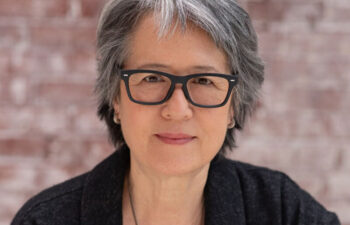
Ruth Ozeki is a novelist, filmmaker, and Zen Buddhist priest, whose books have garnered international acclaim for their ability to integrate issues of science, technology, religion, environmental politics, and global pop culture into unique, hybrid, narrative forms. Her new novel, The Book of Form and Emptiness, published by Viking in September 2021, tells the story of a young boy who, after the death of his father, starts to hear voices and finds solace in the companionship of his very own book. The Book of Form and Emptiness has been shortlisted for the UK Women’s Prize for Fiction. Her first two novels, My Year of Meats (1998) and All Over Creation(2003), have been translated into 11 languages and published in 14 countries. Her third novel, A Tale for the Time Being (2013), won the L.A. Times Book Prize, was shortlisted for the Man Booker Prize and the National Book Critics Circle Award, and has been published in over 30 countries. Her work of personal non-fiction, The Face: A Time Code (2016), was published by Restless Books as part of their groundbreaking series called The Face. Ruth’s documentary and dramatic independent films, including Halving the Bones, have been shown on PBS, at the Sundance Film Festival, and at colleges and universities across the country. A longtime Buddhist practitioner, Ruth was ordained in 2010 and is affiliated with the Brooklyn Zen Center and the Everyday Zen Foundation. She splits her time between Western Massachusetts, New York City, and British Columbia, Canada. She currently teaches creative writing at Smith College, where she is the Grace Jarcho Ross 1933 Professor of Humanities in the Department of English Language and Literature.
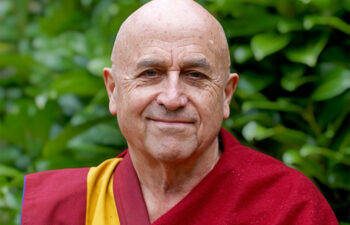
Matthieu Ricard is a PhD in cell genetics who became a Buddhist monk and has studied Buddhism in the Himalayas for the last 50 years. He is a humanitarian, an author, and a photographer. His books include Altruism: The Power of Compassion to Change Yourself and the World. He devotes all the proceeds of his activities to humanitarian projects in Asia, through Karuna-Shechen, the organization he co-founded, which benefits over 450,000 people every year.
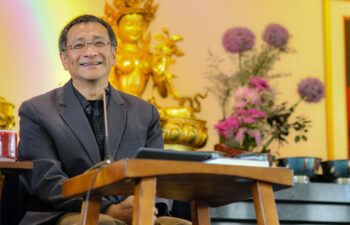
Dzogchen Ponlop Rinpoche is a widely celebrated Buddhist teacher and the author of Emotional Rescue, Rebel Buddha, and other books. A lover of music, art and urban culture, Rinpoche is a poet, photographer, accomplished calligrapher and visual artist, as well as a prolific author. Rinpoche is the founder, president, and spiritual director of Nalandabodhi, an international community of Buddhist centers. Rinpoche is acknowledged as one of the foremost scholars and meditation masters of his generation in the Nyingma and Kagyu schools of Tibetan Buddhism. He is known for his sharp intellect, humor, and easygoing teaching style, for launching the kindness initiative #GoKind and for his outreach to communities internationally.

Sharon Salzberg, Cofounder of the Insight Meditation Society in Barre, Massachusetts, has guided meditation retreats worldwide since 1974. Her latest books are Real Life: The Journey from Isolation to Openness and Freedom and Finding Your Way: Meditations, Thoughts, and Wisdom for Living an Authentic Life. She is a weekly columnist for On Being, a regular contributor to the Huffington Post, and the author of several other books, including the New York Times bestseller Real Happiness: The Power of Meditation, Real Change: Mindfulness to Heal Ourselves and the World, Faith: Trusting Your Own Deepest Experience, and Lovingkindness: The Revolutionary Art of Happiness. Ms. Salzberg has been a regular participant in the Rubin’s many on-stage conversations and regards the Rubin as a supplemental office.

Nora is a ten-year-old student and the daughter of the producer of AWAKEN.
Get the latest news and stories from the Rubin, plus occasional information on how to support our work.